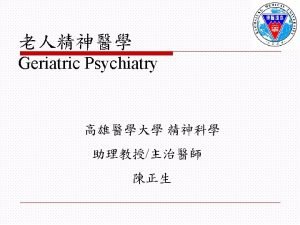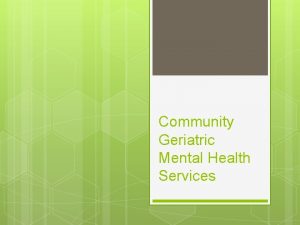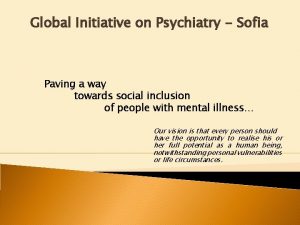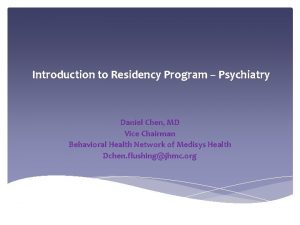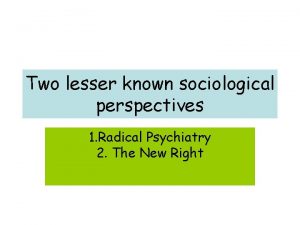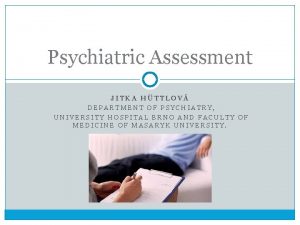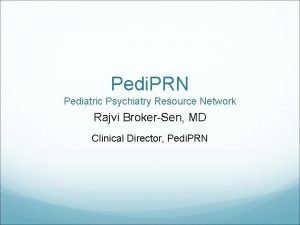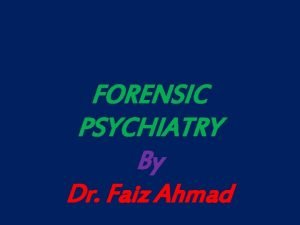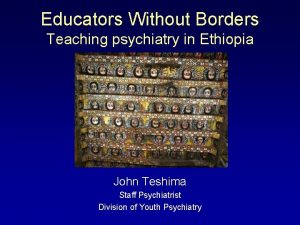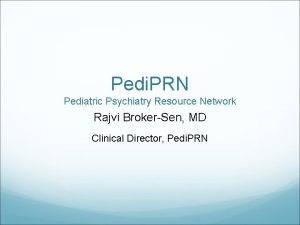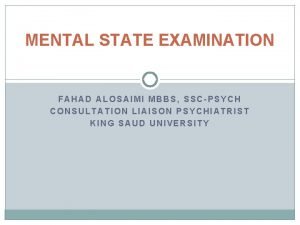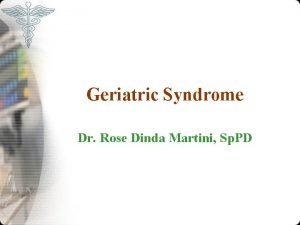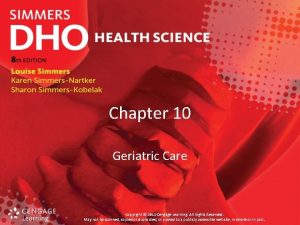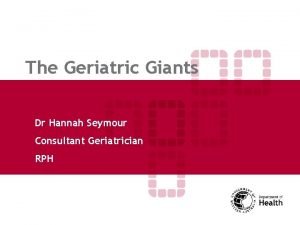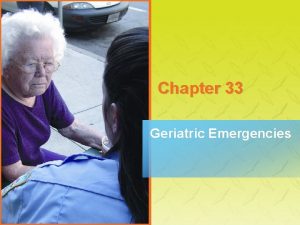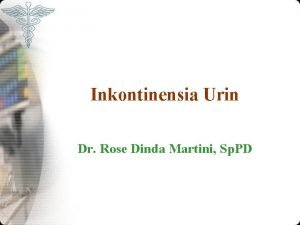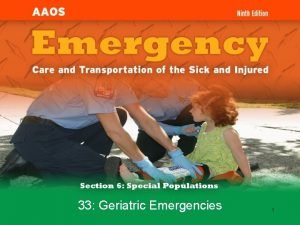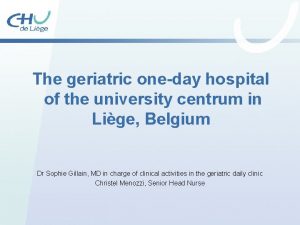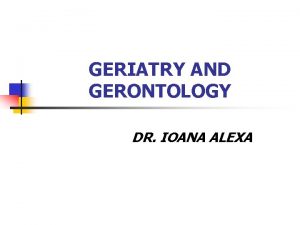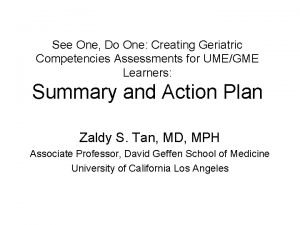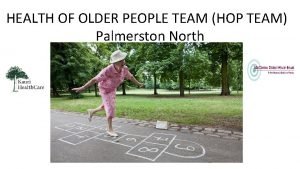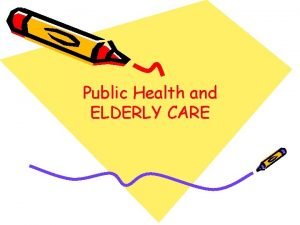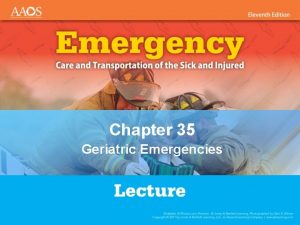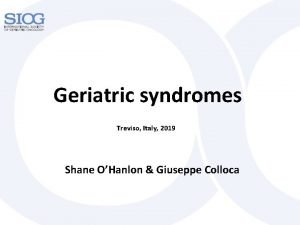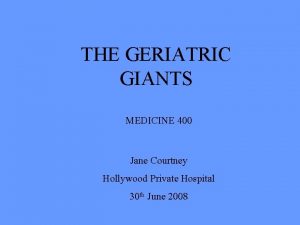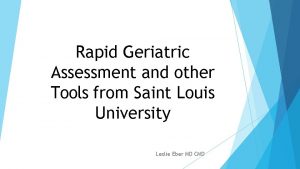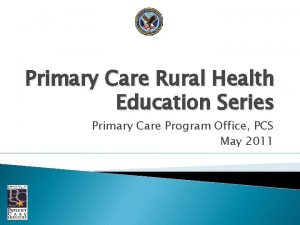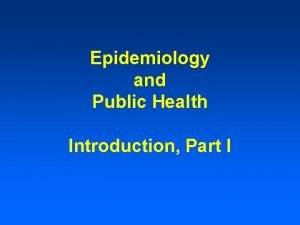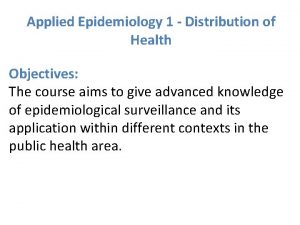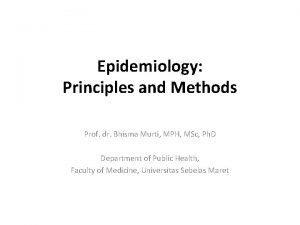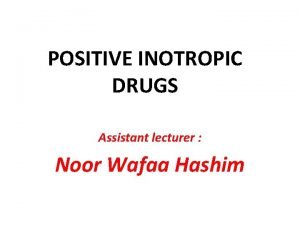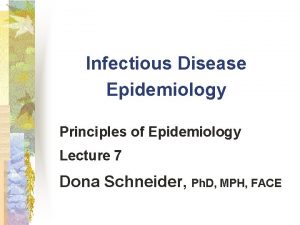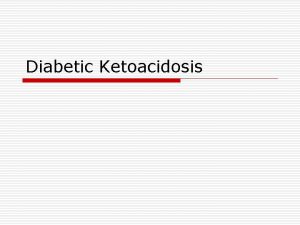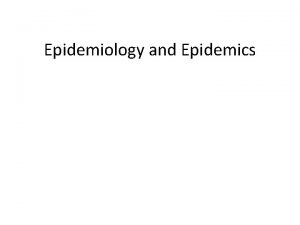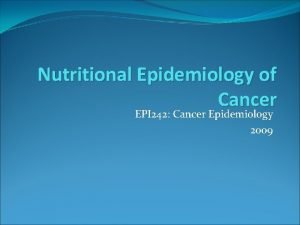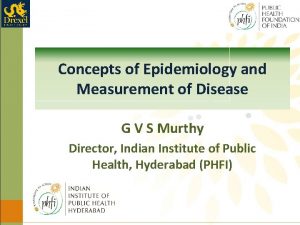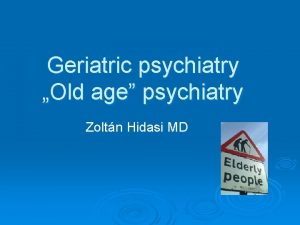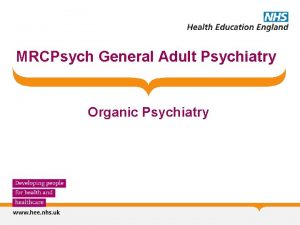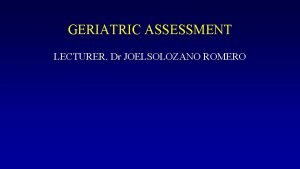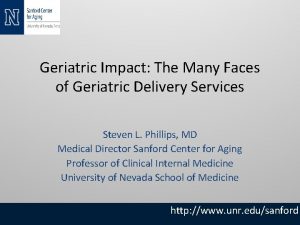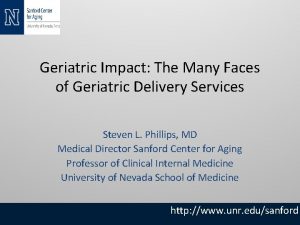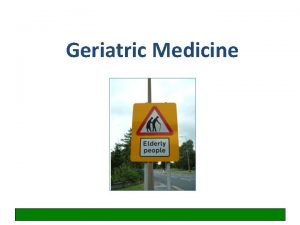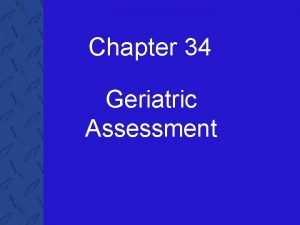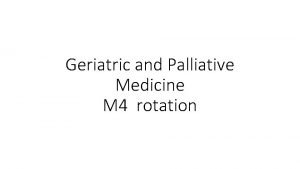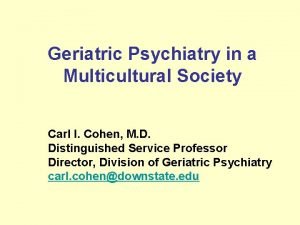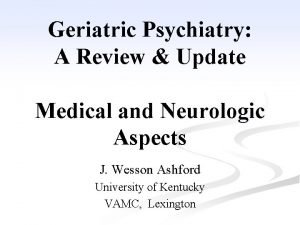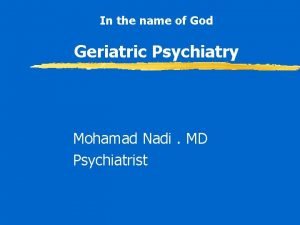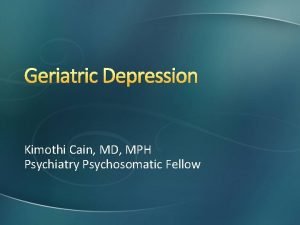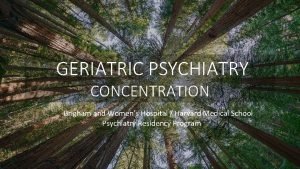Points of Geriatric Psychiatry o Epidemiology n n
































































- Slides: 64


Points of Geriatric Psychiatry o Epidemiology n n o o Normal aging Psychiatry disorders or problems commonly seen n o Prevalence of mental disorder Barriers to mental health service utilization Dementia, depression, delirium, sleep problems, anxiety, suicide Treatment n n Pharmacotherapy, Psychotherapy Treatment models

Mental disorders among older adults--ECA community inpatients Cognitive impairment 4. 9 30. 2 Affective disorders 2. 5 18. 5 Anxiety disorders 5. 5 5. 2 Alcoholism 0. 9 2. 6 Schizophrenia 0. 1 0 Somatization 0. 1 0 Personality disorders 0 8. 3 Others 0 7. 9

Normal aging -- neuropsychiatry o Brain structure n Decrease in gross brain weight n Widened sulci, gyral atrophy, Ventricles enlarge n Increased transport across BBB n Prefrontal lobes are disproportionately affected by aging changes n Subcortical monoaminergic cell populations are subject to prominent decline in aging

Normal aging -- neuropsychiatry o Cognition n Takes longer to learn new materials n IQ remains stable until age 80 n Verbal ability maintained with age n Psychomotor speed declines n Encoding ability diminishes n Simple recall declines

Normal aging -- Sleep o Latency to sleep onset o Frequency of awakening o Total stage-3, & -4 sleep o Total stage-1, & -2 sleep o Redistribution of REM sleep


Features of Mental Problems among the elderly o Highly comorbid with n n o Complication of psychopathology n n o Medical illness Disabilities Cognitive dysfunction Distinct clinical courses Barrier to assess mental health resources

Long-term care (LTC) facilitieso 4. 13% elders in LTC facilities in 1995 o 8% of nation’s total health care costs o Mean age increased in LTC facilities o Very disabled o Options and setting becoming diverse Jones A: Vital Health Stat 13 2002: 1 -116 Gabrel C and Jones A: Vital Health Stat 13 2000: 1 -83 USA data


Barriers to geriatric mental health care o Poorly served by the mental health system n n n o Fewer visits for mental health care Rely more heavily on primary care physicians Low rate of depressive elders taking antidepressant Possible reasons n n n Stigma Low rate of case identification by primary physicians o Multiple medical illnesses divert physicians’ attention o Depression and anxiety may be viewed as normal Neglect by family

Life events o o o Death of significant others Medical ill of oneself or partner Disability Financial issues Relationship with family Retirement

Somatic Symptoms Physical Illness Depressive Disorder

Cognitive deterioration Dementia Depression (pseudodementia)





















Delirium譫妄

Causes of delirium o o o Drugs and alcohol Intracranial causes Metabolic and endocrine disorders Systemic infections Postoperative states

Late life depression o o Late-onset vs. early onset Vascular depression Subsyndromal depression Depression-executive dysfunction syndrome

Suicide Increases with: age bereavement isolation deteriorating health pain Actual & attempted are closely linked

Vascular depression hypotheiss o o Subtype Vascular risk factors, neuroimaging findings More cognitively impaired, more disabled, more psychomotor retardation, less insight Disruption by vascular lesions of striato-pallodo -thalamo-cortical pathways


Medications associated with depression o Antihypertensions n n n o o Reserpine Methyldopa βblockers Oral contraceptives Steroids BZD H 2 antagonists n n Cimetidine Ranitidine o Chemotherapy n n o …. . Interferon Psychoactive substances n n n Alcohol Opiates Amphetamine withdrawal

Treatment o o Treating underlying medical conditions & reducing disability Psychopharmacology: selection depends on n n o o Side effect profiles Concurrent conditions and medications Target symptoms Previous treatment responses ECT Psychotherapy

Sleep disorders o o Lack of social or vocational activity Disturbed circadian rhythm n n o o o living in nursing home, without daily routines degenerative brain Breath related sleep disorders Alcohol or drugs induced sleep disorders Sleep related accidents


Neuropsychiatric syndrome o Post Stroke syndrome n o Depression, anxiety, apathy, psychosis, mania, emotional lability Parkinson’s disease and Parkinsonism n Depression, anxiety, mania, psychosis, drug induced psychosis

Principles of pharmacological treatment o o o Pretreatment medical evaluation Given in equally divided dose Reduced dose to 1/4~1/2 as the young need Simplified medicine Slow titration from low dose Know the interaction between medicine


















謝謝收看 敬請指教 Email: sheng@kmu. edu. tw
 Geriatric psychiatry definition
Geriatric psychiatry definition Community geriatric psychiatry
Community geriatric psychiatry Global initiative on psychiatry
Global initiative on psychiatry Jamaica hospital psychiatry
Jamaica hospital psychiatry Radical psychiatry sociology
Radical psychiatry sociology Core psychiatry
Core psychiatry Internal medicine shelf percentile
Internal medicine shelf percentile Crime psychology definition
Crime psychology definition Mse assessment
Mse assessment Asclepiades father of psychiatry
Asclepiades father of psychiatry National network of child psychiatry access programs
National network of child psychiatry access programs European psychiatry
European psychiatry Addiction psychiatry expert witness
Addiction psychiatry expert witness Forensic psychiatry vs forensic psychology
Forensic psychiatry vs forensic psychology What is the difference between neurosis and psychosis
What is the difference between neurosis and psychosis Psychiatry in ethiopia
Psychiatry in ethiopia National network of child psychiatry access programs
National network of child psychiatry access programs Mse psychiatry
Mse psychiatry Straddle positioning example
Straddle positioning example Point of difference and point of parity
Point of difference and point of parity Geriatric case presentation
Geriatric case presentation 14i geriatric giants
14i geriatric giants Chapter 10 geriatric care
Chapter 10 geriatric care Hannah seymour
Hannah seymour Gems diamond geriatric
Gems diamond geriatric Dr rose dinda martini
Dr rose dinda martini Geriatric nutrition
Geriatric nutrition Frailty syndrome
Frailty syndrome Gems diamond geriatric
Gems diamond geriatric Geriatric syndrome
Geriatric syndrome Centrum geriatric
Centrum geriatric Geriatric giants mnemonic
Geriatric giants mnemonic Geriatric competency assessment
Geriatric competency assessment Palmerston north geriatric
Palmerston north geriatric Objectives of elderly care
Objectives of elderly care Geriatric hat trick
Geriatric hat trick Gems diamond geriatric assessment
Gems diamond geriatric assessment What is geriatric syndromes
What is geriatric syndromes Geriatric giants
Geriatric giants Sarc-f
Sarc-f Va geriatric scholars program
Va geriatric scholars program Wheel model in epidemiology
Wheel model in epidemiology Person place time epidemiology
Person place time epidemiology Define epidemiology
Define epidemiology Distribution in epidemiology
Distribution in epidemiology What is descriptive study in epidemiology
What is descriptive study in epidemiology Bhisma murti
Bhisma murti Association and causation
Association and causation Cross sectional study advantages and disadvantages
Cross sectional study advantages and disadvantages Define nutritional epidemiology
Define nutritional epidemiology How dr. wafaa elsadr epidemiology professor
How dr. wafaa elsadr epidemiology professor Secondary attack rate formula
Secondary attack rate formula Diabetic ketoacidosis epidemiology
Diabetic ketoacidosis epidemiology Defination of incidence
Defination of incidence Descriptive vs analytical epidemiology
Descriptive vs analytical epidemiology Epidemiology triangle
Epidemiology triangle Gate frame epidemiology
Gate frame epidemiology Cbic recertification
Cbic recertification Attack rate epidemiology formula
Attack rate epidemiology formula Logistic regression epidemiology
Logistic regression epidemiology Formula for attack rate
Formula for attack rate Nutritional epidemiology
Nutritional epidemiology How dr. wafaa elsadr epidemiology professor
How dr. wafaa elsadr epidemiology professor Distribution in epidemiology
Distribution in epidemiology Defination of epidemiology
Defination of epidemiology
